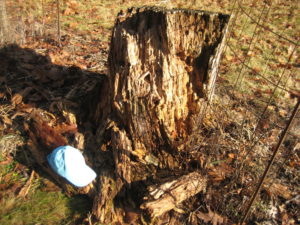Modeling Climate Change is Successful
The argument sometimes made against models of climate change is “if they cannot predict tomorrow’s weather, how can we trust their predictions years into the future?” This illustrates a lack of understanding of statistical methods already in use everywhere, every day. For example, in actuarial science, the insurance industries routinely predict the average age that groups of people will live to (for example, white non-smoker males), and the answers are usually accurate within weeks or a month or two. This is used to design life insurance contracts and calculate premiums. The fact that they cannot predict how long you will live is irrelevant.
Statistics is about populations, not individuals.
And likewise in the realm of climate change, the models may predict that Iowa will average 15% more rainfall over the next decade, but it is not the tool to decide whether it will rain on your picnic in Kent Park next Thursday afternoon. Your picnic rainfall is an individual event within a vast population of Iowa places, and it is a brief individual moment in a large population of Thursdays.
At the most basic level, the world’s climatic package is a heat engine, driven by the energy from the sun. And if you run the heat engine a little hotter, the result is intensification – meaning that individual and seasonal events may be hotter or colder, wetter or dryer, more windy or calmer,… than would have prevailed without the extra heat trapped somewhere in the system. See my blog Climate II: Climate Change and Climate III: Visualizing Our Big Picture, for examples of how an overheating North Pacific ocean can send us a more intense polar vortex.
The physics and the mechanisms that operate local weather, and in aggregate, climate, became well established in the WWII era. The famous example was the planning for D-Day, the Allied invasion of the coast of France June 6, 1944. The Germans and the Allies both modeled the local impending weather the same way, and got the same correct answers; but the Germans decided it would be too rough for an invasion and relaxed their defenses, while the Americans decided it was acceptable and gained the element of surprise.
In the decades that followed, computing power dramatically increased, and it became possible to utilize entire data sets and integrate them over vast areas and long periods of time, and trends could be successfully carried forward into the future. Thus by around 1970 it became possible to build realistic models of how climate could change around the world, responding to increasing amounts of carbon dioxide.
The great unknown became not how to build a climate model, but what people and governments were going to do in terms of how much carbon dioxide they were going to continue dumping into the atmosphere in the future. So each modeler had to select one or more scenarios. Most picked some midrange possibility, not Pollyanna, nor gloom-and-doom scenarios.

A decaying stump may appear to vanish over a few decades, but belowground some of the roots’ cellulose and lignin are on their way to becoming fossil carbon. Blue cap for scale.
Today we can look back on these older models and ask how close they came to the reality that actually unfolded. Last year Zeke Hausfather studied 17 forecasts from 14 models, which had been run between 1970 and 2007. For 10 of them the results were “indistinguishable from what actually occurred,” including the one made in 1970. The other 7 were not far off. He then reran the models using the actual carbon dioxide levels that prevailed during that time, and all the models got the right answers. See: How Well Have Climate Models Projected Global Warming?
So the message is very clear that as us humans have been steadily increasing the heating of the planet, we have also been helping to drive climatic extremes, with all the consequences of flood, drought, wildfire, refugees, etc.
And most of us also have the ability to cut back on our contribution to this escalating problem. The list of personal actions we could take would fill pages. The list of group actions is also lengthy and includes promoting perennial vegetation because it provides the main mechanism that removes carbon dioxide from the atmosphere and stores it long-term in the form of trees and soil organics. Carbon dating of soil organics in prairie, woodlands, and wetlands often reveals ages of hundreds to thousands of years. Lands preserved and maintained by Bur Oak Land Trust and other conservation organizations play a useful role in sequestering carbon, thereby keeping it out of the atmosphere for long periods of time. Another reason they deserve your support.
(photo: )


